An Astrological Renaissance with David Juste
Abbotsford Convent, Melbourne. Friday 19th to Sunday 21st June 2009
Melbourne recently played host to a unique seminar on ancient and medieval astrology delivered by the Belgian scholar, Dr. David Juste. He currently has a Fellowship at the University of Sydney (1) but he really came to Australia for love – that of an Australian girl and to continue the research of his first love, astrology. David’s mother introduced him to astrology in his teens and he took to it like a duck to water. Some 15 years later he stopped practising astrology to become an Historian. His BA thesis was on astrology in the Middle Ages, his MA thesis was titled “The Study of Medieval Astrology: Achievements and Outlook, and his PhD explored ancient astrological techniques. Currently David Juste has taken up the mammoth task of cataloguing all the Latin medieval astrological manuscripts scattered around the globe, perhaps 10,000 in total.
Juste’s research has taken him to Europe’s finest libraries and museums, including the Vatican, the Louvre, the London Warburg Institute and the British Museum. While most of the manuscripts are in Latin, he also reads ancient Greek, Arabic and Hebrew. His first hand experience and knowledge of these manuscripts revealed that there are many variations in the extant interpretations, and that because interpretation is not always straightforward mistakes are made. On that note, he dangled a carrot at us by stating that through a misinterpretation of the medieval material astrologers are using a technique that is incorrect, but more on that later!
In direct contrast to his dry and laborious endeavour, David is full of life and energy, is a clear and articulate speaker and possesses the most extraordinary memory, obviously aided by a genuine passion for the work. In fact, his delivery was so confident and polished he has the air of a well-seasoned teacher (testimony to his Sagittarian ascendant). We were Juste’s first audience of astrologers; for him a positive and enjoyable experience compared to his usual academic opponents.
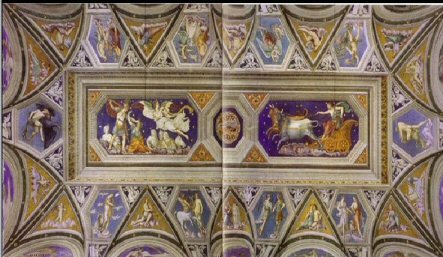
Juste introduced the topic on Friday evening with a visual feast of astrological themes in medieval art. A particular standout was the ceiling in the Sala Di Galatea (above) of the Italian Villa Farnesina.(2) It was painted by Baldassare Peruzzi for Agostino Chigi. Juste lead us on a journey through the mythological imagery before revealing the symbolism in its design. Apparently there have been many conflicting academic arguments as to its meaning until in 1934 Fritz Saxl suggested in his book La fede astrologica di Agostino Chigi that it was a horoscope.
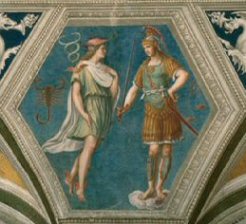
List of images in the ten (blue) hexagons anti-clockwise from the left:
1. Ganymede with an eagle (Aquarius);
2. Saturn with Venus and Cupid (Pisces)
3. Europa with Jupiter as the White Bull, Aries & Taurus;
4. Leda and the Swan with the twins (Gemini);
5. Hercules with the Hydra and the Crab (Cancer);
6. Hercules with the Nemean Lion (Leo);
7. Diana (the Moon) with the Virgin (Virgo);
8. Mercury in Scorpio and Mars in Libra (shown right)
9. Apollo (Sun) with Sagittarius;
10. Venus with a sea goat (Capricorn);

If you look up at the ceiling, the left hand image is of Ganymede, Aquarius. In 1984 a birth certificate was discovered listing Agostino Chigi’s birth date as 29th November 1466 with a time of 21 and ½. In Renaissance practice, the ascendant might be calculated from sunrise, noon, sunset or midnight, but it was more common to use noon. This would give a time of 9:30am – an Aquarian ascendant. This fits with the image of Ganymede to the left, but because the images are arranged in a clockwise direction arguments have arisen as to the correct ascendant. Some modern scholars have suggested Aries, Taurus or Virgo, but Juste believes the Aquarian ascendant is more credible.
Juste displayed many more images each with their own rich and fascinating story, illustrating how astrology permeated the art of the time. But while Juste is reading these rich and glorious manuscripts, he has no intention of translating any of them or writing an astrological work of his own. Indeed, for now, he is staying firmly focused on the job at hand. And the task ahead of him is daunting to say the least – hours of reading and cross-referencing works that are often difficult to read. His enthusiasm and passion may carry him through, although Juste admitted that it is more than one lifetime’s worth of work. He may need to find a worthy mentor to complete the job, just as Johannes Kepler completed the work of Tycho Brahe – the Rudolphine Tables.
As an astrologer I asked the question, “Surely after reading about so many astrological techniques you must be inspired to use them?” To which he replied “no”, mainly because he no longer practices astrology, but he was more than happy to have his chart read. I proposed that writing a text on the origin of astrological techniques would be a useful resource, which he agreed would be his first choice for the topic of a book. So what does his astrology have to say about this matter? It was at his Saturn opposition that his mother introduced him to astrology. Then, at his Saturn Return (Taurus) David abandoned the practice of astrology to pursue a career as an Historian. From August 2009 Saturn will conjunct Pluto – change is afoot – then Jupiter – goal reassessment time – the South Node – a return to the past – Uranus – sudden change becomes a reality – and finally, Saturn hits the Mc in November 2011 – consolidation of status. His next Saturn opposition occurs in October 2012. Perhaps then he may consider writing an astrological book based on his findings, or is that wishful thinking! We shall see.
Saturday Morning was spent discussing the transmission of astrological doctrines from Mesopotamia to Medieval Europe. In the afternoon Juste looked more specifically at the Latin manuscripts and how they are translated. And last but not least he revealed the great misinterpretation – ORBS. David explained that orbs do not feature anywhere. They arose from the earliest interpretations of Alcabitius (Al Qabisi) and Albumasar (Abu Mashar). The confusion lies in the interpretation of degrees of ‘energy fields’ ascribed to each planet, but this has no relation to orb. Neither are orbs mentioned in any of the Greek texts. Juste suggested Claude Dariot (3) as the possible origin of the problem. OMG: No orbs – what a quandary!
On Sunday morning we discussed the lack of accuracy of ephemerides until the Rudolphine Tables were published in 1627, accurate to within 1 minute of arc. In fact, horoscopes calculated before this time were largely inaccurate. We then moved onto house systems and the measurement of time and space; the development of Almanacs; little known medieval techniques; and finally the demise of astrology by 1700 through the negative influence of Copernicus, Galileo and the gradual disinterest of universities. The day ended with time to reflect and ask questions.
Needless to say, it was a most educational, interesting, rich and inspiring weekend. Let’s hope David Juste comes to Melbourne again soon.
notes:
(1) http://www.arts.usyd.edu.au/departs/english/staff/profiles/juste_d.shtml
(2) http://heavenastrolabe.net/villafarnesina/
(3) Dariot, Claude (1533-98). Lyon, 1558. Introduction to Judgement of the Stars. (in French) Chapter VII – Of Application and Separation





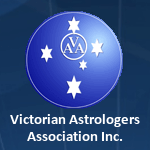



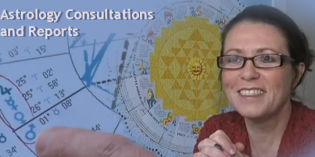


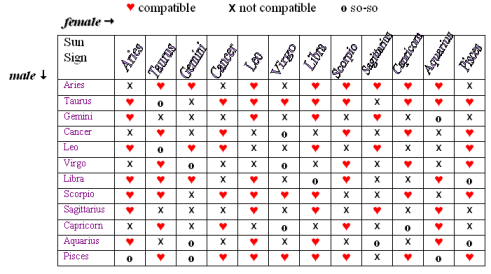
Do you have any video of that? I’d love to find out some additional information.
No I don’t but I’m sure you could find him somewhere on the internet.